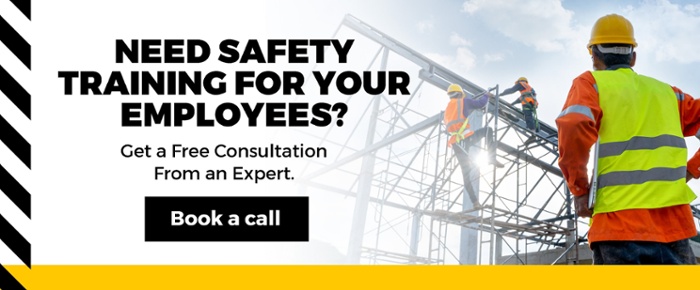Temporary workers on a construction site are at higher risk of incurring an injury than permanent workers.
This can be for a number of reasons, including:
- Less training
- Less incentive to ensure safety
- Unfamiliarity with the work environment
- Performing new and unfamiliar roles on the job
Regardless of these and other factors, temporary workers need the same level of training and safety awareness. Sometimes these workers can slip through the cracks—here are some ways to ensure that they do not suffer accidents as a result.
Who is Responsible for Protecting Temporary Workers?
Three may be some differences of opinion concerning who is responsible for ensuring temporary workers receive the proper safety and job training. The two parties likely involved are your construction company and an agency that provides temporary employees.
According to the Occupational Health and Safety Administration (OSHA), whoever is best suited to provide the training and safety instruction for temporary workers should do so; however, if your company is employing temporary workers, it is ultimately your responsibility. Moreover, the temporary agency should also assume some responsibility for properly training its workers.
In short, it is everyone’s responsibility to see that temporary workers are instructed in the tasks they are to perform, as well as all related safety requirements.
Do Temporary Workers Go on the OSHA 300 Log?
According to OSHA, “temporary workers are entitled to the same protections under the Occupational Safety and Health Act of 1970 (the OSH Act) as all other covered workers.” This means that the mechanism to report injuries should be in place with both the temporary agency and the company employing the temporary worker at the time of the accident or injury.
The host company employing the temporary workers should not keep separate records for temps. The most common understanding of OSHA’s injury and illness reporting and recording requirements allows these workers to be recorded on a different section of the same OSHA 300 log. Good communication between the host company and the temporary agency is required to facilitate the smooth transition of workers between parties when injuries occur when injured workers are able to return to work, and when workers are no longer needed. Both parties are then able to keep accurate records for injuries that meet OSHA guidelines.
8 Safety Training Tips for Temporary Workers
It is everyone’s responsibility to ensure temporary workers receive adequate training for safety. Here are some important training tips for temporary workers.
Clear Communication between the Host Company and Staffing Agency
Clear, constant communication between the host company and the staffing agency is critical to ensuring each party knows exactly how the other trains and prepares a worker before and after they arrive at a job site. With good communication, changes or confusion can be worked out quickly. Plus, workers have a better understanding of when and how to report a problem or incident.
Take the Time for a Risk Assessment
It is imperative not to rush workers into a crowded and busy environment without first assessing the surroundings and taking note of all safety risks and potential hazards. Make any needed corrections before workers are allowed on the site.
Have a Safety and Health Program
Instruct temporary workers in your company's safety and health program and explain how it works to protect them. If your company does not have a safety program, a safety consultant can help you build one to mitigate risks and save on costs.
Provide Training before Project Begins
Temporary workers should receive the exact same safety and job training as your permanent workers before they begin work. Each worker should be thoroughly instructed in all safety protocols, regulations, and the use of necessary safety equipment. They should also be made aware of the common risks of their new work environment.
Clearly Define Tasks
Temporary workers are routinely contracted to perform low-skill tasks that may require little instruction. They should still receive guidance that clearly defines their tasks and lays out what is expected of them, outlining the risks and how to perform their job safely.
Conduct a Joint Risk Assessment with Staffing Companies
The host company and staffing agency should always conduct a joint risk assessment so both parties are aware of the potential risks to their workers and how these can best be mitigated. A trained and experienced safety consultant can be a valuable resource.
Ensure Proper Recordkeeping
As mentioned above, clear communication and sharing of details about temporary workers can ensure both the host and the staffing agency maintain detailed records on all employees that meet OSHA standards.
Related Article: How to Prepare for a Surprise OSHA Inspection
Maintain Contact with Workers
Host companies need to maintain contact and check on temps routinely to ensure they understand their role and have everything they need to perform their jobs safely. Temp agencies should also routinely connect with temporary employees to ensure communication and resolve any misunderstandings or problems.
Do Your Temporary Workers Have What They Need?
If your construction company uses temporary workers, it is your responsibility to partner with the staffing agency to make sure these workers have everything they need to perform their jobs safely. A safety consultant from SafetyPro Resources can audit your job site or production process for safety concerns and provide safety training for permanent or temporary workers to help reduce the risks and costs of unwanted accidents.


















